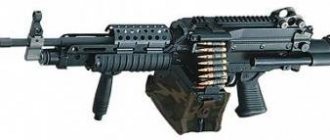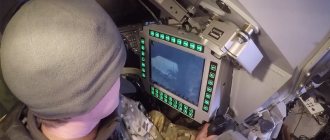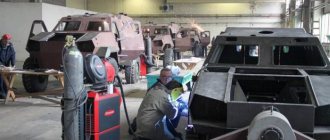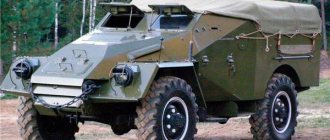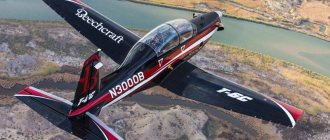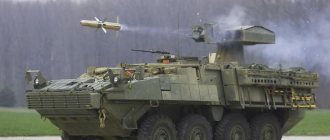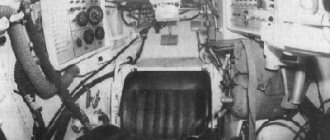I'm dying, how can I live?
Since the entry of coalition troops into Afghanistan and Iraq, the issue of protecting vehicles has become acute.
It is much more convenient for militants not to shoot Marines or infantry in open battle, but to blow up a truck or Hummer with brave guys from Arkansas or Texas. Naturally, the US Department of Defense sounded the alarm and began buying up all the MRAPs available at that time. One of the suppliers was, which was able to supply the troops with the M-ATV armored vehicle.
However, soon the “zoo” of various equipment began to completely strain the military, and a tender was announced for the supply of a single protected vehicle for all branches of the military, which would replace the light Hummers in the army. The competition was fierce, with about a dozen companies initially vying for a piece of the pie with contracts to supply more than 49,000 MRAPs for the Army and about 9,000 for the US Marine Corps. The winner was Oshkosh with its new armored car L-ATV (Light All-terrain Vehicle - “light all-terrain vehicle”), which went into production under the name JLTV - (Joint Light Tactical Vehicle - “single light tactical vehicle”).
The number of lawsuits, trials and behind-the-scenes struggles during the procurement process “delighted” everyone around me simply incredibly.
However, in 2022, the first vehicles were delivered to the 10th Mountain Division at Fort Drum, then to the 173rd Airborne Brigade in Europe and to parts of the Marine Corps. Such powerful military states as Great Britain, Slovenia, Lithuania began to show interest in the project... Isn’t that good?
American armored personnel carriers
American armored personnel carriers
Half-track armored personnel carriers M2 and M3
M2
The founder of the American family of half-track vehicles is considered to be the Half-Track T1, built in 1932 by James Gunniagham and Song in Rochester (New York). In October 1940, the US Army adopted the T14 model, a half-track armored personnel carrier under the designation M2 Half-Track Car. After some modifications, it began to be produced as the M3 Half-Track Personel Carrier for transporting personnel.
The M2 was designed and manufactured on the basis of civil truck units using an engine complete with clutch and gearbox, axles, steering, assemblies and electrical equipment. However, the tracked propulsion system was developed specifically for armored personnel carriers. It consisted of two front drive wheels, two idler wheels with a tensioning mechanism, two support rollers, and eight dual support rollers with rubber tires. The 300 mm wide caterpillar track was made of metal plates connected by a hinge. A permanent rubber band was vulcanized onto the plates on both sides. There were lugs on the outer surface of the track, and protrusions on the side for attaching anti-skid tracks. With their help, M2 could overcome snow cover up to 0.5 m deep.
Half-track armored personnel carrier M2 Half-Track Sag. Fort Bennin, USA, 1940
Changing the direction of movement was carried out only by turning the front wheels. The foot brake acted simultaneously on them and on the drive wheels of the rear axle. There was also a hand brake. All controls and control devices of the car were purely automotive. White 160AX six-cylinder carburetor engine with a power of 147 hp. also previously used on White WC23PLT (4x2) five tonne trucks and other vehicles of this type.
The body of the armored personnel carrier was an open box type, riveted from sheets of armored steel on a frame made of angles, mounted on the car chassis frame. The car had a classic hood layout.
In the control compartment, the driver was located on the left, and the vehicle commander on the right. The troop compartment could contain the remaining two crew members and six artillery crew members or six fully equipped infantrymen.
The armored personnel carrier was equipped with a cargo winch with a traction force of over 4.5 tons, which was driven from the gearbox through a power take-off mechanism. Often, instead of a winch, a sprung buffer drum with a diameter of 310 mm was installed, which helped overcome ditches and trenches up to 1.8 m wide.
When driving on the highway, the M2 could reach speeds of up to 70 km/h with a gasoline consumption of 69 liters per 100 km.
The armament of the armored personnel carrier consisted of a 12.7 mm Browning M2НВ machine gun, a 9 mm submachine gun, 10 grenades, 14 anti-tank mines. Along the sides of the hull there was a rail on top for mounting one or two more 7.62 mm Browning M1917A1 or M1919A4 machine guns. Communication was provided by shortwave and ultrashortwave radio stations SCR-506 or SCR-508, -608, -610 at a range of up to 16 km and up to 1 km, respectively.
The M2 armored personnel carrier served primarily as an artillery tractor, designed to tow field guns, or as a vehicle for transporting ammunition. The M2 armored personnel carrier could tow guns weighing up to 3.5 tons along the highway at a speed of 36 km/h.
In the period from 1941 to 1943, the armored personnel carrier was produced by White, which manufactured 8,423 vehicles, and by Autocar, which produced 2,992 units.
The USSR received M2 - 342 units and M3 - 2 (according to other sources - 4) under Lend-Lease.
TACTICAL AND TECHNICAL CHARACTERISTICS of the M2 armored personnel carrier
Weight, t: 7,809.
Crew, people: 4.
Troops, people: 6 - 8.
Dimensions, mm: length - 5003, width - 2540, height - 2235, track - 1930, ground clearance - 285.
Armament: one 12.7 mm Browning М2НВ machine gun, one or two 7.62 mm Browning М1919А4 or М1917А1 machine guns.
Reservation, mm: frontal armor - 12.7, sides and rear - 6.35.
Engine: four-stroke petrol White 160AX with liquid cooling, power 147 hp.
Transmission: four-speed gearbox with range, double differential.
Chassis: front axle - wheel drive, rear axle - track drive, four double road wheels per side, front drive wheel.
Speed, km/h: on the highway - 69. Cruising range, km: on the highway - 290.
Half-track armored personnel carriers M5 and M9
M3 armored personnel carrier on maneuvers at the Disert Training Center in California. USA, autumn 1941
By the end of 1942, the companies that produced the M2 and M3 armored personnel carriers did not have time to meet the growing needs of the army. Another company, International Harvester Company (IHC), joined the production. Since December 1942, it began producing M5 and M9 armored personnel carriers. They retained the general layout and shape of the M2 and M3 hulls, differing only in the installation of those components and assemblies that were produced by this company itself. Thus, the cars were equipped with an IHC RED-450-B carburetor engine with a power of 141 hp, front and rear axles - IHC 1370 and RHT-1590, differentials were replaced in the transmission, and a new gearbox was installed.
In addition, the machine body became welded from sheets of rolled homogeneous steel, amenable to press processing. However, in terms of bullet resistance, homogeneous steel was inferior to armor with surface cementation. Therefore, the thickness of the front plate was increased to 16 mm, and the hull armor plates to 8 mm. The increase in vehicle weight required the installation of more powerful axles, strengthening of the frame and suspension elements.
In total, IHC produced 4,625 units of the M5 and 2,026 units of the M9. But these armored personnel carriers were not used by the US Army. They went to deliveries to the allies under Lend-Lease. The main reason: the new IHC units differed from the standard ones used on the M2 and M3. Therefore, 5238 armored personnel carriers were transported to England, where they served as artillery towing vehicles, as well as headquarters and ambulance vehicles.
401 M5 armored personnel carriers and 413 M9 armored personnel carriers were delivered to the Soviet Union under Lend-Lease. Most of them were assigned to artillery units, where they were mainly used to tow 85 mm anti-aircraft guns and 100 mm anti-tank guns. About 120 transporters entered the armored forces as reconnaissance, headquarters and command vehicles.
Landing tracked vehicles
Loading the floating amphibious tracked vehicle LVT-4 onto a ship
Landing Vehicle Tracked (LVT) is what the US Navy called tracked amphibious amphibious vehicles. Their main function was to deliver troops from the ship to the shore. It was believed that amphibians should spend 80% of their time on the water and only 20% on land, landing marines in their positions and supporting them with machine gun fire.
Beginning in the summer of 1941, when the first production batch of LVTs was released, the Americans created a whole family of such machines. These are transporters LVT-1, -2, -3, -4, improved LVTP-5, -6, amphibious tanks LVT(A)-1, -2, -4, -5, variants with rocket launchers, self-propelled flamethrowers, amphibious repair and recovery vehicles, anti-aircraft installations. Moreover, they were all produced in considerable quantities. So, for example, 1225 LVT-1 transporters were delivered to the army, about 3000 - LVT-3, more than 500 - armored LVT(A).
The LVT-2 was put into service in 1942. It was an unarmored vehicle with a streamlined body, although it had a “trough-shaped” shape. To ensure reliable buoyancy and better stability, metal sectional pontoons were attached to the sides of the vehicle. In its bow, in a closed wheelhouse, there was a control compartment, in the middle there was a landing force, and in the stern there was a power plant. With a flexible driveshaft running through the entire body, the engine was connected to a power transmission mounted in the very nose. Thus, the drive wheels with gear rims were in front, the guide wheels were behind. The chassis had 11 road wheels on each side on swing arms attached to the hull pontoons; the first and last skating rinks were raised for ease of entry into the water and exit to the shore.
LVTs for maritime transport were installed closely on the deck
Soldiers of the 3rd Battalion, 88th Infantry Division of the US Army on an LVT-4 cross the Po River in Italy. April 24, 1945
The body of the machine was welded from steel sheets; a frame was welded to it below, on which power units and mechanisms were mounted. The total weight of LVT-2 was almost 14 tons.
A feature of American amphibious transporters was the absence of a propeller and rudders. The movement was carried out by means of caterpillars. They consisted of links with two tracks, one of which was equipped with a water-lug - a removable blade, but since they quickly wore out on land, they had to be replaced often. The turn was made by braking or completely stopping one of the tracks. The vehicles were also distinguished by their very low specific pressure on the soil: it was only 0.6 kg/cm2, which ensured their maneuverability even along swampy shores.
The engine for the LVT-2, as well as the transmission units, were taken from the Stuart M3A1 light tank. It was the right move: the gasoline, carburetor Continental W670-9A had proven itself well by this time, and the “Stuarts” were already being withdrawn from service. Its power is 250 hp. - allowed the conveyor to move at speeds on water up to 12 km/h, and on land - up to 32 km/h.
The crew of the vehicle consisted of three people: the commander, the driver and his assistant; their places were in the wheelhouse. The landing compartment could accommodate 24 marines or 2.5 - 3 tons of cargo. It was armed with two or three 7.62 mm machine guns and one 12.7 mm machine gun.
LVT-2 was mass-produced from the beginning of 1943 to the end of 1944. In total, more than 2962 units were produced. They were in service with the Marine Corps and military units of the US Army.
The combat path of amphibians began with the assault on the island of Guadalcanal in August 1942. In the post-war period, they took part in the wars in Korea and French Indochina.
About 100 LVT-2 vehicles were transferred to the Allies, of which only 5 entered the USSR under Lend-Lease.
TACTICAL AND TECHNICAL CHARACTERISTICS OF THE LANDING TRACKED VEHICLE LVT-2
Weight, t: 13,721.
Crew: 3.
Troops, people: 24.
Overall dimensions, mm: length - 7970, width - 3251, height - 2640, ground clearance - 460.
Armament: one 7.62 mm Browing М1919А4 machine gun, one 12.7 mm Browing М2НВ machine gun.
Engine: Continental W-670-9A, gasoline air-cooled, power 250 hp.
Transmission: five-speed synchronized gearbox, double differential.
Chassis: 11 road wheels and two support rollers on board, rear drive wheel, 73 tracks in the caterpillar, width 362 mm.
Speed, km/h: on land - 32, on water -12.
Cruising range, km: by land - 480, by water - 320.
Obstacles to be overcome, m: wall height - 0.9, ditch width - 1.5, ascent angle, degrees. - thirty.
M3A1 Scout Car reconnaissance armored personnel carrier
M3A1
Simultaneously with the creation of half-track transporters, the United States was developing armored vehicles, the functions of which included not only the transportation of unit personnel, but also the ability to conduct reconnaissance operations. The first prototype of such a car, designated M1, was presented in 1934 by the White Motor Company on the chassis of a 1.5-ton all-wheel drive truck. Its corps was equipped with armor and armed with four machine guns. The engine had a power of 75 hp.
Continuing work on improving the project, in 1938 the company proposed a new version of the machine with a Hercules engine with a power of 110 hp. and also with four-wheel drive. The body was open, welded from armor plates. The frontal sheet of the hood was placed at an angle. Doors were installed on the front sides to speed up the disembarkation of the crew. The back could accommodate six infantrymen, ammunition, and a radio station.
A rail was strengthened along the sides of the hull, along which 12.7 mm M2 and 7.62 mm M1919A4 machine guns could be moved. In addition, a cabinet with a turret for anti-aircraft firing was placed in the center of the body.
The sprung drum in front of the radiator helped to overcome oncoming obstacles.
In the US Army, the armored personnel carrier received the designation M3A1 Scout Car (Scout Car reconnaissance vehicle). Serial production lasted from 1941 to 1944. These vehicles were among the most common during the war. More than 20,918 of them were produced. In 1942-1945. “Scouts” were also in service with the British, Australian, French, New Zealand, and Chinese armies. They first began to participate in battles in December 1941 in the Philippines.
Since 1942, 3034 armored personnel carriers have been delivered to the USSR under Lend-Lease. They were included mainly in reconnaissance companies of tank, mechanized and motorized rifle brigades - 3 - 4 vehicles per company, in reconnaissance battalions of corps - 6 - 8 each. The army motorcycle regiment had 13-16 vehicles, the first squadron of cavalry regiments - 15 . In addition, the “scouts” received artillery units.
The M3A1 Scout Car light armored personnel carriers were in service with the Red Army throughout the 1940s.
M3A1 Scout Car armored personnel carrier at the Aberdeen Proving Ground. USA, 1941
Cabin M3A1. A Browning machine gun is mounted on the hull rail in front, and a radio antenna stand is mounted behind the seats.
The reconnaissance unit on the M3A1 moves into position. 2nd Ukrainian Front, July 1944
Tactical and technical characteristics of the M3A1 armored personnel carrier
Weight, kg: 5624.
Crew, people: 8.
Overall dimensions, mm: length - 5619, width - 1962, height - 2111, ground clearance - 301.
Armament: one 12.7 mm Browning M2NV machine gun, one 7.62 mm Browning M1919A4 machine gun.
Ammunition, cartridges: 600 - 12.7 mm caliber, 8000 - 7.62 mm caliber.
Reservation, mm: frontal armor - 12.7, side armor - 7.62 mm, rear armor - 6.35.
Engine: 6-cylinder Hercules, carburetor liquid cooling, power 110 hp.
Transmission: four-speed gearbox, two-stage range, double differential.
Chassis: 4x4 wheel arrangement, suspension on semi-elliptical leaf springs with hydraulic shock absorbers.
Speed, km/h: 88.
Power reserve, km: 360.
Obstacles to be overcome, m: wall height - 0.36, ford depth - 0.7, ascent angle, degrees. - thirty.
Yes, but no
Soon the office began to receive reports on the use of the first copies. For some reason, they are not always censored and often contain the phrase “unsuitable for use...”.
What is the reason for this reaction?
JLTVs are contractually supplied in two- (cargo) and four-door versions, each of which, in turn, can be manufactured in the basic version, as a fire support vehicle and a close-combat vehicle. To begin with, the military complained about extremely poor visibility from a car with a large number of blind spots - even compared to the old Humvee. Those who have at least once sat in the military version of this miracle of the American automobile industry (in which, for example, a view of the rear hemisphere is only possible for a machine gunner in the gunner’s turret), understand: you have to try hard to manage to make it even worse!
(Photo: Oshkosh)
There are problems with the interior space: climbing from one seat to another or getting something out of the luggage compartment becomes something of a balancing act. And reloading heavy weapons on a fire support vehicle turns into something completely indecent.
The JLTV configuration for close combat does not provide the required fire efficiency even on the training ground, let alone in combat operations. The biggest criticism was against it as “the most useless” among the entire line of cars. It got to the point of ridiculousness: the reinforced armored doors began to jam during frequent use, thereby locking the personnel inside a large iron target for ATGMs, without adding to the soldier’s love for this car.
And the most piquant point: it is impossible to maintain the normal technical condition of new equipment without... a service representative of the customer or contractor companies affiliated with him. Military repairmen were simply dismissed from work with a beautiful paper “service contract” with a bunch of zeros - and special allowances for the manufacturer for work carried out in a combat zone.
(Photo: Oshkosh)
Who said "corruption"? This is America! This is impossible here! It just happened that way.
